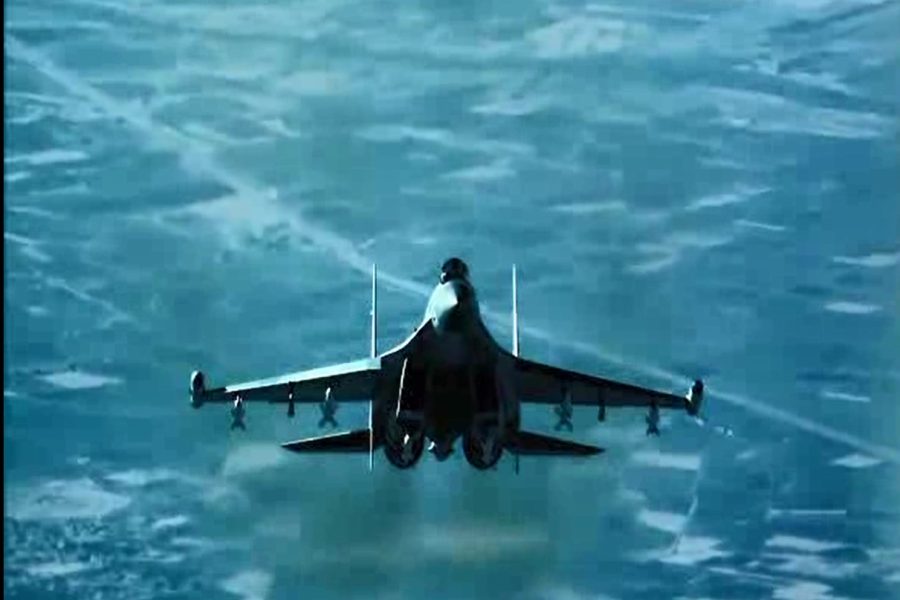Stepping up harassment of U.S. aircraft over northwest Syria, Russian fighter jets damaged two MQ-9s this week, U.S. officials say.
The Russian actions have sparked a broader debate over how the U.S. should carry out air operations against ISIS militants in Syria as tensions between Moscow and Washington escalate.
“I don’t see any reasonable way forward where you don’t keep flying the aircraft,” said retired Marine Corps Gen. Kenneth F. McKenzie Jr., who commanded U.S. forces in the Middle East from 2019-2022, in an interview with Air & Space Forces Magazine. “We have a clear continuing counter-ISIS mission that needs to be accomplished there.”
On July 26, two Russian fighters approached an MQ-9 and one dropped flares, striking and damaging the aircraft’s left wing in several places, according to U.S. officials.
The Russians quickly put out their version of events: Rear Admiral Oleg Gurinov, a Russian military official in Syria, accused the U.S. of provoking the encounter with a “dangerous” approach by the MQ-9, causing the Russian pilots to release flares to defend themselves. Gurinov called U.S. MQ-9s operations “provocative,” according to Interfax, a Russian news agency.
Gurinov claimed sensors aboard the planes triggered “the automatic operation of onboard defense systems and the shooting of false thermal targets.”
A U.S. official disputed the account. “The Russian storyline that the propeller-driven MQ-9 ‘dangerously passed’ Russian fighter aircraft is laughable,” the U.S. official told Air & Space Forces Magazine. “If an MQ-9 can sneak up on a Russian Su-35, then they probably need another Su-35 pilot.”
Just three days prior, on July 23, a Russian Su-35 released flares, striking an MQ-9’s propeller. As with the July 26 episode, the drone returned safely to base. The Russians also blamed the U.S. for that incident, prompting Air Forces Central (AFCENT) to release a video of the incident showing how the Russian plane flew toward the drone and released flares directly in its flight path.
The incidents raise the larger question of how the U.S. will carry out air operations against ISIS without letting escalating tensions with Moscow get in the way. The two nations’ air forces have managed to deconflict operations effectively since Russian forces arrived in 2015 to support President Bashar al-Assad’s fight against insurgent forces. American forces are in Syria for a very different mission: partnering with local groups fighting against the remnants of ISIS.
To avoid inadvertent confrontations, the two sides created a deconfliction channel linking Russian and American commanders. But in recent months, the channel has increasingly become a complaint line, U.S. officials say, rather than a means of managing airspace so each side can carry out operations without interference.
One way the U.S. could ease tensions would be to reduce U.S. MQ-9 operations over northwest Syria, some observers say. But doing so would constrain both intelligence gathering and the ability to strike at ISIS leaders, providing them a refuge in that part of the country. It would also send a signal to Moscow that aggressive operations can be effective in getting the U.S. to pull back.
“We don’t want this to escalate,” McKenzie said. “But at the same time, we can’t be forced out of this space. Those drones perform a vital task for us.”
Another approach could be to have U.S. fighter aircraft accompany the MQ-9s some of the time. That could discourage the Russians from overflying U.S. forces in eastern Syria and loitering over the American outpost at Al Tanf, as a Russian reconnaissance plane did earlier this month. Right now, four U.S. fighter squadrons—F-16s, A-10, and now F-35s—are deployed to the CENTCOM area of responsibility. F-22s were sent to the region in June after American encounters with Russian forces in the air, but the Raptors have since left.
Escorting MQ-9s over northwestern Syria where Russian and Syrian regime forces are more active could present additional risks.
“You would be taking a lot of risks with manned platforms,” said McKenzie. “I used to say when I was the CENTCOM commander: ‘I’m very brave with uncrewed aircraft. I’m not real brave with crewed aircraft. I’m very conscious that I’ve got human beings on those airplanes.’”
The White House has also sought to minimize the chances of a military confrontation with Russia in and around Ukraine and in other parts of the world.
Yet another option could be to continue the MQ-9 flights while documenting the Russian provocations whenever they occur.
“We’ve dealt with provocative actions in the Middle East for a long period of time,” retired Army Gen. Joseph L. Votel, the commander of CENTCOM from 2016-2019, told Air & Space Forces Magazine. “We’ve got to demonstrate some will and some strength in these areas and make it very plain that these are not acceptable activities, and then we’ve got to expose it for what it is.”
AFCENT’s commander Lt. Gen. Alexus G. Grynkewich and other defense leaders have been vocal in calling out Russian behavior, and the Pentagon has taken the unusual step—in many cases—of releasing video footage from U.S. drones and manned aircraft in an effort to counter the Russian narrative.
An NSC spokesperson said July 26 that “Russia’s close approach to, and deployment of flares over, U.S. drones during routine missions against ISIS targets violates established protocols and international norms.”
A day after the July 26 episode, however, the Pentagon has yet to make public any video of the encounter, leaving it unclear whether the Department of Defense is still committed to its policy of naming and shaming the Russians whenever they engage in provocative actions.
